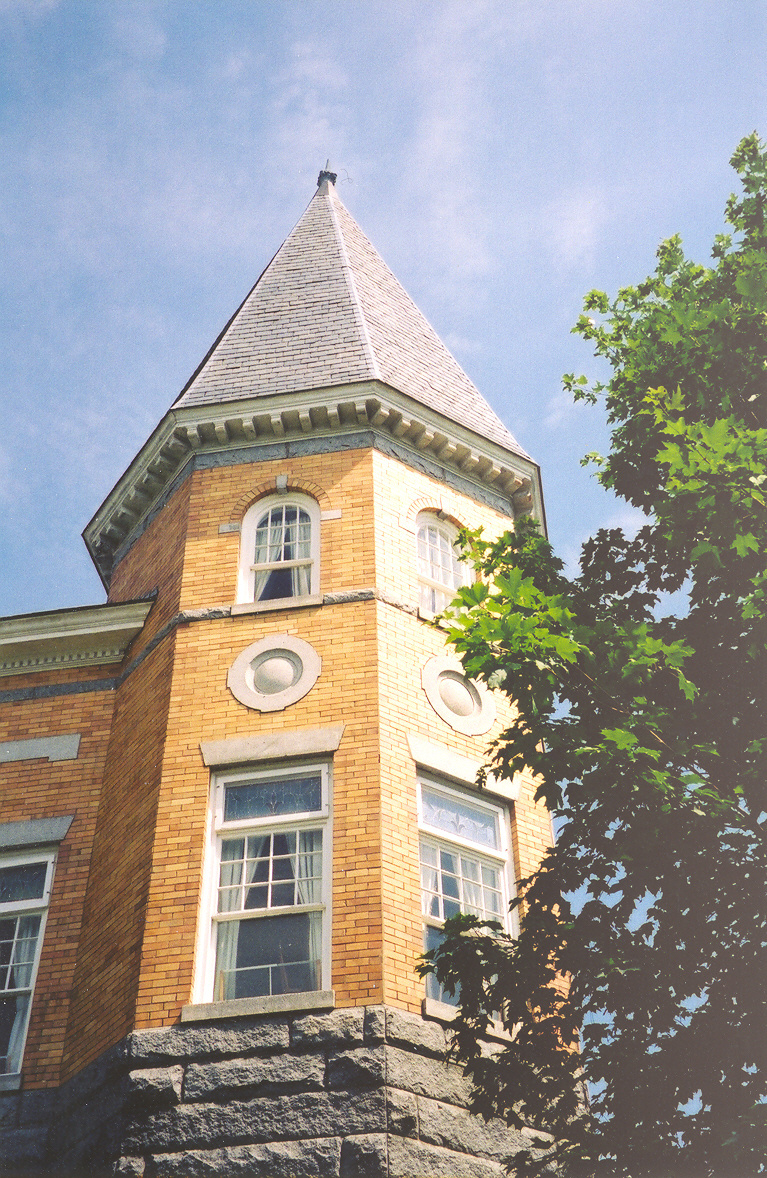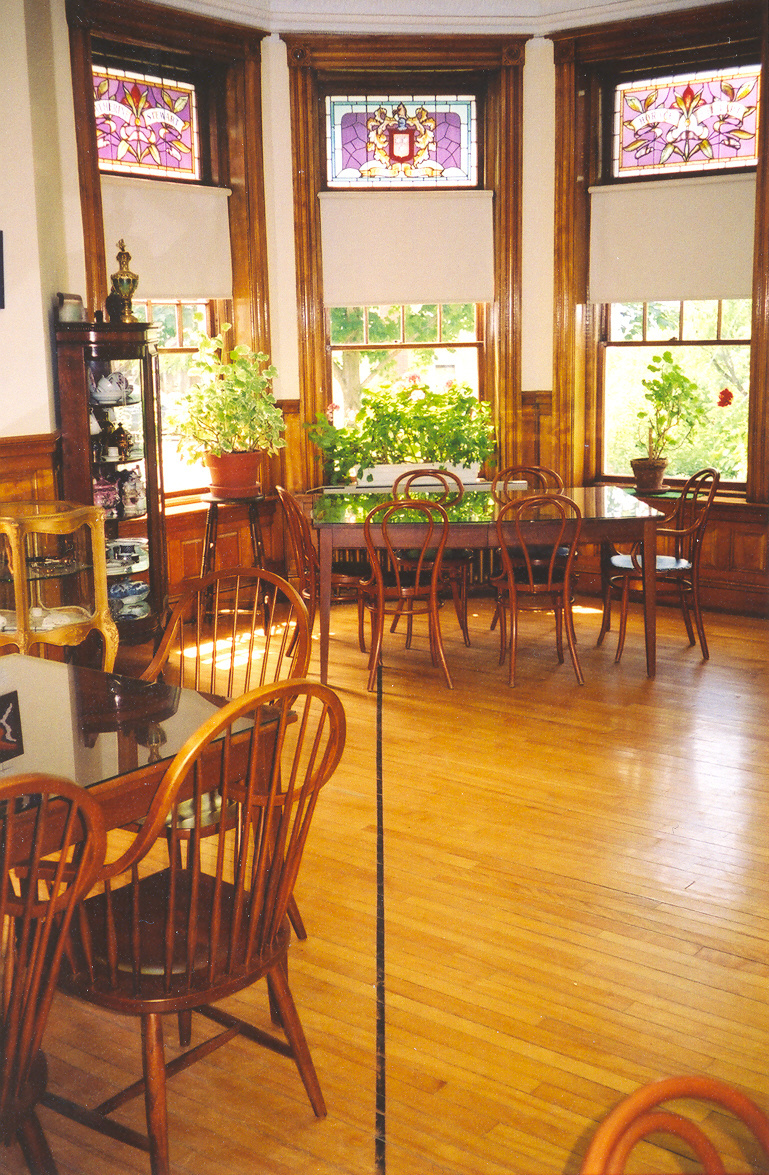The Haskell Free Library and Opera House has the distinction of being partly in Canada (Stanstead, formerly Rock Island, QC) and partly in the United States (Derby Line, Vermont), making it a point of interest of Stanstead, one of Canada’s border towns. As its name implies, it contains a lavish 400-seat theatre as well as a library. Inside the century-old building, a line of black tape runs the international boundary between both countries. The portion of the Haskell Free Library and Opera House located within Canadian territory was designated a National Historic Site by the Historic Sites and Monuments Board of Canada in 1985. Similarly, the American portion is listed on the United States National Register of Historic Places.

History and Activity
The Haskell Free Library and Opera House was co-founded by Canadian-American philanthropist Martha (Martin) Stewart Haskell and her son Colonel Horace Stewart Haskell. It was first built in memory of the late Carlos Haskell, Martha’s husband and Horace’s father, and was later donated “for the use of the residents of both countries” [Canada and the United States] in memory of both Martha Stewart Haskell and Carlos Haskell. This donation embodies the Victorian values of the time – namely, the belief in the “intellectual and moral benefits of education and the arts.”
Construction of the Haskell Free Library and Opera House began in 1901 at the cost of $100,000. The building was designed by architect James Ball and Gilbert H. Smith. Inaugurated 7 June 1904 by the Columbia Minstrels, Stanstead-born bass singer Eugene Cowles, and an orchestra from Sherbrooke, the theatre subsequently housed light operatic and dramatic productions, recitals, and lectures.
The theatre's use declined later in the 20th century, but it has continued in service, marking its 100th anniversary in 2004. In 1993, The Haskell Opera House became home to the theatrical company QNEK Productions, which ran for 25 years under the direction of Lynn Leimer. With Leimer’s retirement in September 2017 came the company’s final season. As was the case for many public institutions, the Haskell suffered a months-long closure in 2020 and 2021 due to the COVID-19 pandemic.
Nowadays, the Haskell Free Library hosts weekly events for children, such as crafting and storytelling activities, reading programs, writing workshops, free musical lessons and a comic book club, while the Opera House organises film screenings.

Layout of the Haskell Free Library and Opera House
There are two entrances to the Haskell Free Library and Opera House. The entrance to the hall and the adjoining Haskell Free Library is in the United States, while the stage and most of the orchestra pit and balcony are in Canada. Because of its unique location, the United States government declared the Haskell Opera House a neutral area during the Second World War (WWII) in order to avoid complications for performers and audiences, who must cross the international boundary that divides the auditorium. No passport is required for Canadians and Americans to enter the premises, as the Haskell does not constitute an official border crossing. However, visitors should expect to be under Royal Canadian Mounted Police (RCMP) and United States Border Patrol surveillance during their stay, and international law requires Haskell visitors to exit through the same door they’ve entered from.
A line of black tape marks the international boundary across the Haskell Free Library’s main entrance hall and children’s reading room. In an interview with Al-Jazeera, a Haskell tour guide explains that “the line of tape on the floor was added to mark the exact border line after a fire decades ago set off a fight between insurance companies over who had to pay for damages.” In March 2025, the United States closed Canadian access to the American section of the Haskell Free Library and Opera House, driving further tension between the two countries amid a budding tariff war and threats of annexation by the United States government. As of 1 October 2025, Canadian visitors are expected to go through an official border crossing to access the front entrance and library through the United States.
(See also Border Towns in Canada.)

 Share on Facebook
Share on Facebook Share on X
Share on X Share by Email
Share by Email Share on Google Classroom
Share on Google Classroom


